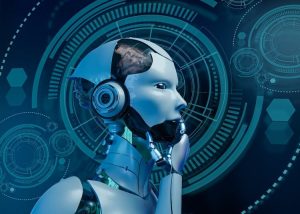
Artificial Intelligence in Training: Transforming Learning with AI
- Author: Urban Rotar
- Published:
Explore how Artificial Intelligence in Training is revolutionizing learning—from personalization and simulations to ROI measurement, ethical safeguards, and future trends.

Artificial Intelligence in Training is revolutionizing how organizations upskill and develop their workforce. By harnessing adaptive learning algorithms and predictive analytics, AI enhances personalization, boosts engagement, and identifies skill gaps proactively.
From creating dynamic, tailored learning paths and real‑time feedback to generating training content and automating administrative tasks, AI delivers scalable solutions that drive efficiency and measurable impact in corporate learning programs . In today’s rapidly changing work environment—where up to 44% of job skills may shift within five years—embracing Artificial Intelligence in Training is essential for staying competitive and ensuring employees acquire the right skills at the right time.
Why AI in Training Matters
AI is more than just a buzzword in learning and development—it’s a transformative force reshaping how organizations deliver and measure training. By leveraging intelligent algorithms, data insights, and automation, AI drives unprecedented levels of personalization, efficiency, and strategic clarity. Below, we explore three core benefits that demonstrate why Artificial Intelligence in Training and e-learning is attracting attention and investment across industries.
Personalization & Engagement
AI enables adaptive learning paths tailored to each learner’s unique skill set, knowledge gaps, and pace. Algorithms analyze interactions, quiz results, performance history, and engagement trends to deliver customized modules that evolve with the learner. According to Infopro Learning, AI-powered personalization can improve learner engagement by up to 60%.
Interactive features—such as gamified challenges, real-time feedback, and scenario-based learning—keep learners motivated and invested. Studies in Intelligent Tutoring Systems have shown AI-driven interfaces can increase student engagement by more than 25%.This dynamic, responsive experience keeps learners immersed and more likely to retain knowledge.
Efficiency & Cost Reduction
AI dramatically reduces the administrative burden on learning teams. Platforms can auto-generate content—presentations, videos, quizzes—using generative models, then localize and update it instantly. This reduces manual workload and shortens time-to-market for new training tracks.
Real-world use cases support these efficiencies: Stellar.ai reports that organizations adopting AI-powered efficiency achieve faster workflows and significant cost savings. In enterprise settings, AI automates routine tasks like assigning courses, follow-ups, and certification tracking, freeing trainers to focus on strategic initiatives like coaching and curriculum design.
Real-Time Performance Insights
AI-powered dashboards and predictive analytics offer a continuous, real-time view into training program health and learner progress. AI models sift through performance data to spotlight trends such as skill gaps, drop-off rates, and content bottlenecks.
In customer-facing industries, AI tools analyze live data to proactively tackle issues—this same tech applies in training, helping L&D teams intervene before learners disengage. Predictive models flag at-risk learners, enabling timely support, while historical patterns forecast which modules may need updating or are underperforming.. This creates a closed-loop feedback system, ensuring training stays relevant, efficient, and outcome-driven.
Key Applications of AI in Training
AI enables personalized training paths using adaptive algorithms based on learner behavior, making skill development more effective. Corporations use AI-powered simulations alongside virtual reality to allow employees to practice sensitive client interactions in safe, controlled environments. Tools like Colossyan streamline production of training videos and quizzes via generative AI, lowering costs and improving scalability.

How to Implement AI in Training Programs
Data Infrastructure & Platform Needs
Foundational clean, structured data and secure integrations are critical to support personalization engines and analytics.
Choosing the Right AI Tools & Vendors
Evaluate solutions based on:
- AI adaptability (e.g., Smart Arena’s 360° AI‑powered LMS, content creation, and analytics)
- Generative content platforms like Colossyan
- Learning ecosystems like Coursly favorable for tracking and adapting content
Pilot Projects & Scale‑Up Strategy
Start with pilot programs in high-impact areas, measure results, iterate, and scale based on ROI and learner feedback.
Measuring Impact: Metrics & KPIs
Track metrics such as completion rate, learner retention, performance uplift, and time-to-competency to quantify impact.
Challenges & Ethical Considerations
- Data Quality, Privacy & Security
AI systems rely on quality data—without it, insights are flawed. Robust compliance with GDPR and secure handling of learner records is essential. - Bias, Fairness & Algorithmic Transparency
Bias can creep into models through skewed training data. Ethical governance, transparent algorithms, and periodic audits are essential safeguards. - Integrating Human Oversight & Human‑in‑the‑Loop
AI should assist, not replace, trainers. Human supervision ensures high-stakes decisions remain accountable and contextual.
Success Stories & Case Studies
- Bank of America: AI-powered conversation simulations for real-world scenario practice. ft.com
- Johnson & Johnson: AI-driven “skills inference” identifying and analyzing employee competencies.
- DHL: Internal career marketplace with AI recommendations for targeted training.
- Smart Arena: Slovenian-built AI-powered LMS with integrated authoring tools and analytics—used by T‑2, Merkur, and Sava Insurance for bite‑sized learning at scale.

Best Practices: A Step-by-Step Guide
- Define objectives & learner personas—align AI initiatives with key outcomes.
- Start small—launch pilots with clear KPIs like completion and performance improvements.
- Use analytics to refine—leverage dashboards to adjust content and personalize interventions.
- Embed ethical governance—formalize oversight, bias assessments, and privacy reviews.
- Scale iteratively—roll out gradually, ensure trainer support, and create feedback loops.
FAQs on AI in Training
- What exactly is AI-powered training?
It leverages AI to personalize, simulate, and automate training content, delivery, and evaluation—enhancing speed, relevance, and effectiveness. - Will AI replace trainers?
Not at all. AI augments trainers by handling personalization and analytics, allowing human experts to focus on mentorship and complex instruction. - How do we ensure learner data safety?
Implement strong encryption, follow GDPR best practices, anonymize data, and secure platform integrations behind secure firewalls. - What ROI can organizations expect?
IMPACT depends on context—leading firms have reported 30–50% jumps in retention, lowered time-to-skill, and improved internal mobility across pilot programs.
Conclusion
Artificial Intelligence in Training opens doors to vastly improved personalization, scalability, and insight-driven growth—but it must be implemented thoughtfully. By adopting robust data strategies, ethical frameworks, and human-centered oversight, organizations can unlock the full potential of AI-powered learning.
Ready to bring AI into your training strategy? Explore how Coursly.ai and partners like Smart Arena can accelerate your learning journey—reach out today!



